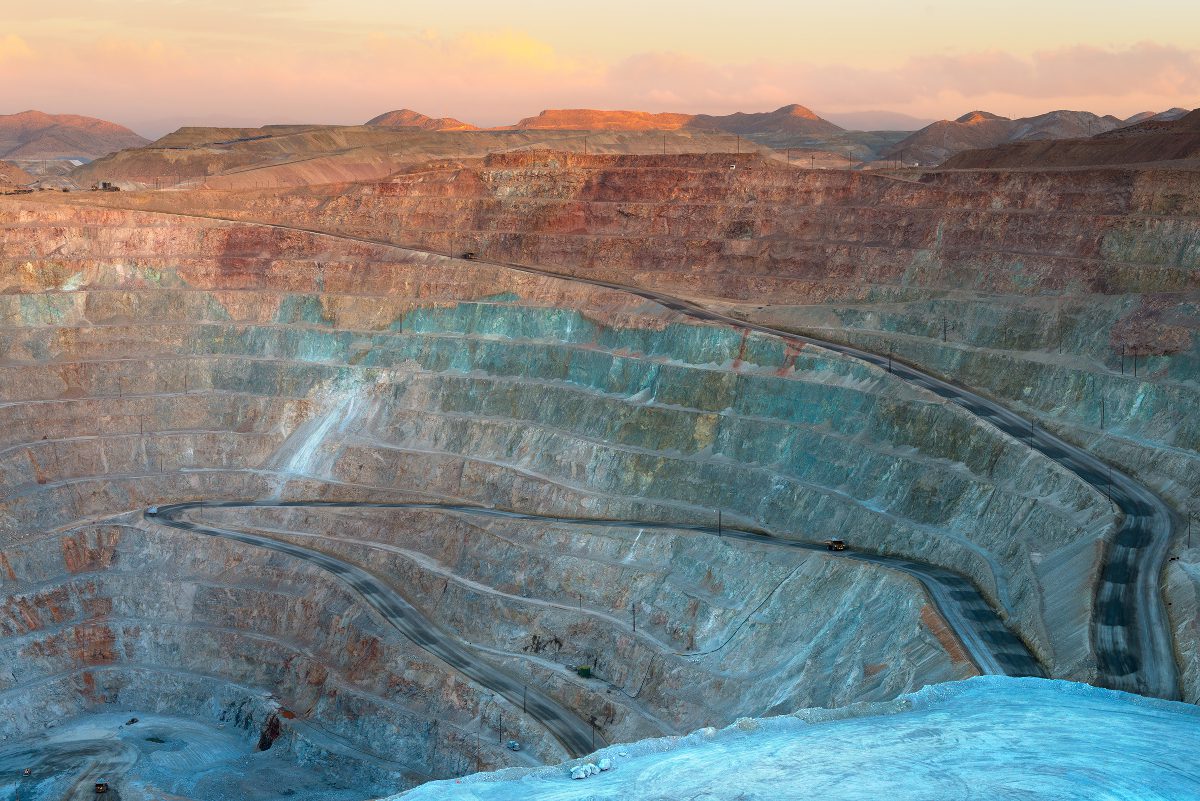
Shortages of copper and other important metals look likely to decisively shape the unfolding of any proposed energy transition
Not enough copper is being mined to meet demand, according to the world’s largest producers, with shortages now looking likely to slow the transition to low-carbon energy sources.
Comments to that effect were made at the FT Mining Summit in early October, with the shortfall being blamed on a lack of new mining development, which in turn is being blamed on a number of factors.
A recent fall in metal prices has prompted greater hesitancy on the part of investors whose backing is required to develop new mines. Other problems include labour shortages and the lengthier timelines increasingly required for permitting. It is also becoming harder to find – at sufficient quality – the ores of many metals crucial to the energy transition.
Warnings of an impending shortage of key metals and minerals – including things like copper, nickel and lithium – have been forthcoming from a number of commmentators in recent months, including consultancy groups with an interest in the area, such as McKinsey. A report from the latter in July also outlined recommendations to address the problem. But these latest comments from copper producers seem to confirm the inevitability of a crunch in supply.
The FT quoted Kathleen Quirk, president of Freeport-McMoran, the largest US copper producer, who said various factors – not just metal prices – “really are going to limit how quickly we can develop supplies.” She suggested this may elongate the timeline of the energy transition.
The fall in metal prices is one effect of the global economic slowdown, and greater inflation has meant higher costs for many industrial businesses, which face cost pressures in areas such as energy, transportation and labour.
Another crucial factor affecting the economic viability of developing mines is the ore body grades, which seem to be declining in quality. The global average head grades from copper mines have dropped from approximately 1.8% in 1970, to 0.7% in 20211 – this being an indicator of the percentage copper quantity present in the ore, by weight.
One potential solution is being sought in new technology – for example, to maximise the amount of copper that can be extracted, including from sources such as mining waste. Speciality chemicals firm Drasklovka, for example, is offering a patented glycine leaching technology, which it says can do this, as well as being able to provide 50% cost savings when working with complex ores. The firm says the approach is “non-toxic and recyclable” and that it “could potentially save the mining industry billions of dollars”. Existing partners in this deployment include mining firm Barrick Gold.
The projected crunch in supply will also likely motivate attempts to innovate these metals out of products, although it’s difficult to foresee how that might proceed.
A medium-sized wind turbine, for example, uses around 67 tons of copper. Extracting this amount from the ground requires miners to move almost 50,000 tons of earth and rock, or around five times the weight of the Eiffel Tower.2
Global pressure points
An August report from insurance company Allianz Trade offered commentary on the potential geopolitical risks such shortages might present.
When it comes to the metals and critical minerals that appear crucial to the energy transition, the demand is set to at least double by 2040, fuelled by demand for things like battery storage for EVs, and low-emissions power generation and electricity networks.
The concentration of these resources within a small number of locations worldwide could create geopolitical risks, including things like cartelization and trade wars.
The report focuses on critical raw materials, as opposed to strategic. Copper, for example, is classed as a strategic raw material. The EU categorizes raw materials as “strategic” on the basis of their importance to the region’s industry and economy, with “critical” materials being a subset of this category, to indicate those also subject to a higher supply risk.
China is the dominant producer of critical raw materials, controlling nearly all of heavy rare earth elements, 91% of magnesium and 76% of silicon metal supplies worldwide. The Democratic Republic of the Congo accounts for over 60% of the global cobalt market. Meanwhile, South Africa holds 71% of global platinum supply, and Russia has a 40% share of palladium.
Should these countries decide to form an Organization of Metal-Exporting Countries (OMEC), suggests the report, in an apparent nod to OPEC’s historical power in oil and petrochemicals, it could manipulate prices and restrict international trade, potential creating problems for regions dependent on imports, such as the EU, Japan and South Korea.
The report asks: can Europe’s Critical Raw Materials (CRM) Act close the gap? The CRM Act is a package of measures proposed by the European Commission in March, part of the Green Deal Industrial Plan.
The CRM Act proposes a 10% target for EU sourcing of critical raw materials. But the Allianz Trade report notes that seven of the 18 materials listed do not meet the requirement at the mining stage (antimony, borate, manganese, natural graphite, rare-earth elements, tantalum and titanium). For all of these, the EU27 is highly dependent on sourcing from third countries (more than 94%).
The plan also targets meeting at least 15% of annual consumption via recycling. However, says the report, out of 16 strategic raw materials, only four meet the target. “Half of the remaining 12 will not be able to meet the target as they are either consumed or converted in the industrial process, or there are simply no meaningful scrap quantities available for the quickly growing demand, as is the case for lithium.”
The report proposes a path to increasing the EU’s independence, via things like a favourable trade-policy environment, and strategic partnerships with resource-rich countries. “They way forward should also focus on sustainable extraction practices, becoming the critical shareholder of industry frontrunners and reinforcing recycling.”
McKinsey’s July report offered predictions about the degree of shortage predicted for various key metals and minerals that are crucial to the energy transition. These vary from “mild” (a term applied to the 10% to 20% shortages expected for nickel) to “severe” (dysprosium, for example, a highly magnetic material used in most electric motors, could see shortages of up to 70%.
Michel Van Hoey of McKinsey commented in the document that protecting future demand would require mining for materials “to exceed beyond historical growth rates, while at the same time doubling down on exploration to ensure further scale up of supply beyond 2030.”
“This could mean investment increasing by about $300 billion to $400 billion per year to meet demand.
Notes
[1] The net-zero materials transition: Implications for global supply chains. McKinsey & Co. July 2023.
[2] https://theunitednationscorrespondent.com/green-transition-impossible-without-greater-action-on-sustainable-minerals-and-metals-wrf/
[3] “Critical raw materials: Is Europe ready to go back to the future?”. Report by Allianz Trade. 1 August 2023.








